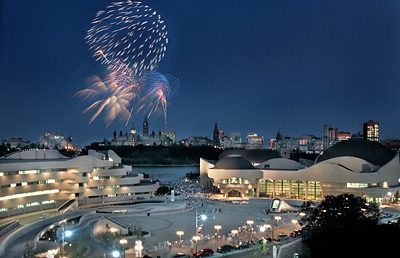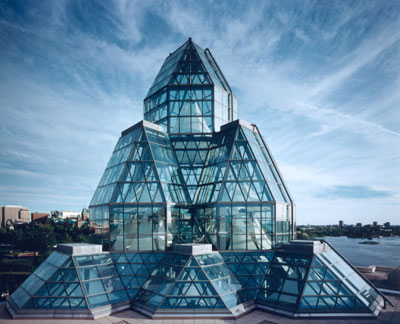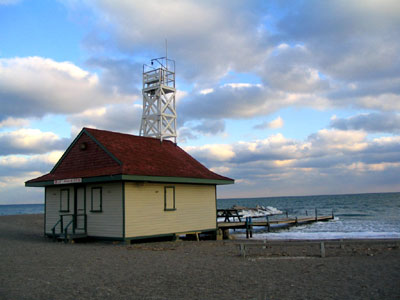My recent trip to Ottawa last weekend gave me a chance to explore Canada’s capital first-hand. One place I did not have time to visit this time was Canada’s largest and most visited museum: the Canadian Museum of Civilization.
An architectural masterpiece, the Museum offers a thousand years of Canadian history. It also holds the world’s largest indoor collection of totem poles and the magnificent First Peoples Hall. You can also visit the IMAX® Theatre, the Canadian Children’s Museum, the Canadian Postal Museum and a variety of special exhibitions.
To get a better idea of this celebrated museum I had a chance to talk to Yasmine Mingay from the Canadian Museum of Civlization who gave me a great overview of this unique institution.
1. Please tell us about the Canadian Museum of Civilization. How long has it been in existence? Where is it located? How can I get there?
The Canadian Museum of Civilization began its life in May 1856, as part of the Geological Survey of Canada. The young museum grew into the National Museum of Canada and then, into the National Museum of Man. In 1986, it became the Canadian Museum of Civilization, moving into its magnificent Gatineau buildings three years later.
The Canadian Museum of Civilization (CMC) is Canada’s largest and most popular cultural institution, attracting over 1.3 million visitors each year. Located on the shores of the Ottawa River in Gatineau, Quebec, the Museum offers a spectacular view of the Parliament buildings across the river.
2. What is the mission of the Canadian Museum of Civilization?
The mandate of the Canadian Museum of Civilization is “to increase, throughout Canada and internationally, interest in, knowledge and critical understanding of, and appreciation and respect for, human cultural achievements and human behaviour, by establishing, maintaining and developing for research and posterity a collection of objects of historical or cultural interest, with special, but not exclusive, reference to Canada, and by demonstrating those achievements and behaviour, the knowledge derived from them and the understanding they represent.”
3. The building is rather unique. Please tell us about the architecture of your museum.
Designed by Native-Canadian architect Douglas Cardinal, the Canadian Museum of Civilization is considered one of the most striking architectural masterpieces of the twentieth century. The award-winning building, with its dramatic, curved lines, attracts admirers from all over the world and is considered essential viewing for anyone visiting the National Capital Region.
Douglas J. Cardinal was born in Calgary, Alberta in 1934, the eldest of eight children. In 1953, he enrolled at the University of British Columbia’s School of Architecture, and in 1956 pursued his studies at the University of Texas in Austin, graduating in 1963 with a Bachelor of Architecture (Honours).
When asked about his design for the Canadian Museum of Civilization, architect Douglas Cardinal replied, “The Museum will be symbolic in form. It will speak of the emergence of this continent, its forms sculpted by the winds, the rivers, the glaciers. It will speak of the emergence of humanity from the melting glaciers, of man and woman living in harmony with the forces of nature and evolving with them. It will show the way in which men and women first learned to cope with the environment, then mastered it and shaped it to the needs of their own goals and aspirations.”
The building covers approximately 100,000 square metres (1,076,400 sq. ft.) and consists of two distinct pavilions. The Museum Building houses public exhibitions in over 25,000 square metres (270,000 sq. ft.) of display space. The administrative Curatorial Building contains the collections (four million artifacts), conservation laboratories and staff offices.
4. Please talk to us about your three major galleries, the Grand Hall, Canada Hall, First People’s Hall.
Our permanent exhibitions are located in the 3 major galleries you just mentioned. The majestic Grand Hall is the architectural centrepiece of the Museum. This elliptical gallery measures 1,782 square metres (19,182 sq. ft.), and has a 112 m x 15 m (365 ft. x 50 ft.) glass wall, framing a breathtaking view of Parliament Hill and other important national institutions. On the opposite wall, an immense scrim is printed with a forest backdrop, making this the largest colour photograph in the world. This dazzling setting makes the Grand Hall an ideal showcase for the world’s largest indoor collection of totem poles.
Developed in collaboration with Native Elders and artisans, the Grand Hall celebrates the rich cultural heritage of the Native peoples of the Northwest Coast. It is home to a dramatic exhibition of six Native houses, each representing a different coastal nation and linguistic group: Coast Salish, Nuu-Chah-Nulth (Nootka), Kwakwak’awakw (Central Coast), Nuxalk (Bella Coola), Haida and Tsimshian. The six house façades, constructed by Native craftsmen, are based on coastal architectural styles of the past 150 years. The work began in British Columbia, with final assembly undertaken at the Museum. Storytelling sessions, demonstrations and performances are held regularly in the Grand Hall.
After hours, the Hall, which has a seating capacity of 400, is available for private receptions and banquets. In recent years, the Grand Hall has provided a stunning setting for the state visits of Queen Elizabeth, Prince Charles, British Prime Minister Tony Blair, U.S. President Bill Clinton, Mexican President Vicente Fox, and many other world leaders.
The Canada Hall leads visitors on a remarkable journey through one thousand years of Canada’s social history. A panorama of Canadian history unfolds in an area covering over 3,000 square metres (32,300 sq. ft.), with a 17-metre (56-ft.) domed ceiling. The Canada Hall has been developed in two sections. The first focuses on the Atlantic region, Quebec and Ontario from 1000 to 1885. The second covers Western and Northern Canada from 1885 to the present.
The first section of the Canada Hall includes reconstructed scenes of early European activity: a Norse landing in Newfoundland in A.D. 1000, as well as the interior of a Basque ship and a whaling station — both dating from about 1560. An Acadian exhibit, a New France farmhouse and public square, an inn, a hospital, a shoemaker’s house and a cooper’s house all illustrate life in New France from 1600 to 1760. A voyageur camp, a Conestoga wagon, a lumber camp shanty and a Métis campsite represent expanding frontiers from 1680 to 1860. For the period between 1760 and 1885, visitors are conducted through British military quarters, a shipyard and a main street in late nineteenth-century Ontario.
The second section of the Canada Hall showcases the West and the North in historical settings. Displays currently include a turn-of-the-century railway station and railway yard, a Saskatchewan grain elevator, a Ukrainian church that was moved here from Alberta, scenes from the Winnipeg General Strike of 1919, a Chinese hand laundry and a 1920s Alberta oil derrick. This section illustrates urban development in the early industrial era (1890–1940). It includes a West Coast fisheries scene and a reconstruction of Yellowknife’s Wildcat Cafe, which provides a venue for stories from the North, past and present.
The Museum’s newest permanent exhibition is the First Peoples Hall, a 2,000-square-metre permanent exhibition hall, in the planning for over a decade, that highlights the cultural, historical and artistic achievements of Canada’s First Peoples.
The new exhibits contain more than 2,000 artifacts, works of art, documents and illustrations. They reveal the many aspects of Aboriginal peoples, from earliest origins to the present day, and underline their fight for cultural survival









